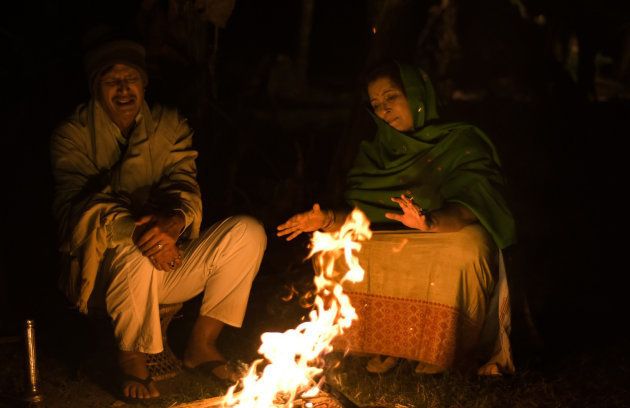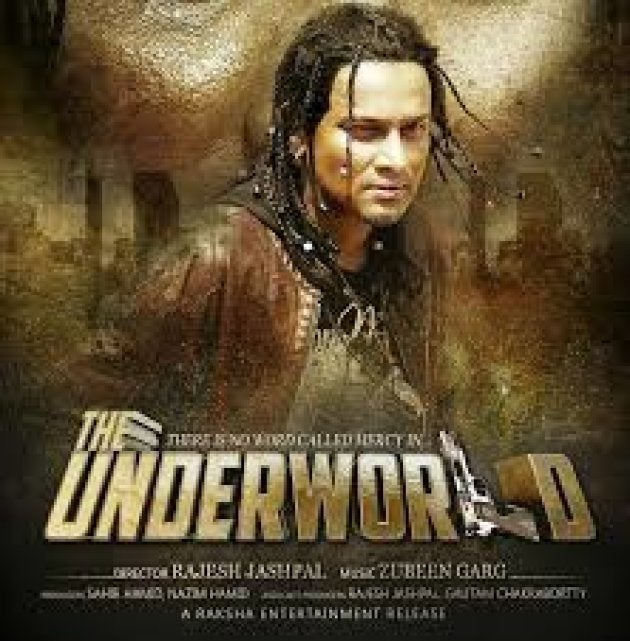
In September this year, Village Rockstars, an independently produced Assamese film shot with a Canon 5D camera and a single lens, beat big-budget Bollywood blockbusters like Padmaavat, Pad Man and Raazi, to become India's official entry to the Oscars.
The nomination has sparked a revival of Assamese film-making—one of India's oldest cinematic practices dating back to the 1935 film Joymoti, directed by Assamese cultural icon Jyoti Prasad Agarwala, which was released just four years after India's first film talkie Alam Ara was released.
Joymoti wasn't a commercial success, but was noticed for its sharp 'political' and 'rebellious' notes. Since then, the local film industry has struggled to stave off the relentless march of big-money Bollywood and Hollywood productions.
Now, in an interesting twist, Bollywood A-listers seem to be waking up to the Assamese film industry's significance, with Priyanka Chopra's Purple Pebble productions backing Jahnu Borua's film Bhoga Khirikee (Broken Window), which was released in end-October.

The success of Village Rockstars caps a fascinating run of low-budget Assamese films that have found popular audiences in the state.
"We are witnessing a miracle," says national award-winning director Manju Borah, describing the new surge of enthusiasm around Assamese cinema following the success of Village Rockstars, directed and co-produced by Rima Das. "Rima, with a bunch of amateur actors from her village and a Canon 5D camera with only one lens, has given us a path-breaking film. The film's biggest achievement is it has brought back audiences, which until recently was missing due to various reasons."
Borah's own achievements, for that matter, have been unprecedented—a woman director with multiple national awards.
But she is more than generous in her praise for the new breed of filmmakers from Assam who are ready to take risks.
Dreams on a budget
Assamese directors and producers estimate that the annual budget of the local film industry is about Rs 15 crore a year. By contrast, the budget for Padmaavat—the Ranveer Singh-Deepika Padukone starrer, directed by Sanjay Leela Bhansali—was Rs 180 crore.
Two new Assamese films hit the movie halls each month, and about 50 films are in pre- and post-production phases. That's a fraction of the more than 1,000 movies the entire Indian film industry makes each year.
Yet, modest budgets, film critics say, are a vital reason why the local film industry has survived.
"We have to understand it is a small industry. The average budget of a film is around Rs 30 lakh. This has helped the industry stay afloat," says film critic Utpal Datta.
Village Rockstars, which is still running successfully, has already earned Rs 80 lakh at the box office despite being made on a shoestring budget—perhaps the first Assamese film to have achieved this feat so far.
Filmmakers say the shortage of money has meant Assamese films take much longer to shoot than their better financed peers.
Himanta Talukdar, for instance, took two years in the scripting and pre-production of his film Calendar. The film, about an ageing couple and their only son settled in Delhi, had a budget of just Rs 10 lakh and another Rs 3 lakh for publicity.

For Bollywood, Rs 13 lakh is peanuts. But for Assam, it seems like a luxury when you consider that Local Kung Fu, another Assamese production, was made with just Rs 90,000.
Most filmmakers feel the local industry and audiences are not ready for big-budget films, with Bhoga Khirikee an exception.
"Here, small and meaningful cinema can do wonders," says a national-award winning filmmaker, who did not wish to be named. "Bhoga Khirikee had a budget of more than Rs 3 crore as it has been produced by Priyanka Chopra. We are waiting to see if the film works at the box office."
Talukdar says his film was an experiment. "I knew my limitations, including the lack of technical wherewithal," he says. "We wanted to show that a good film can be made on a low budget. We have recovered all the expenses. I feel a sense of vindication."
Theatre of politics
Many of Assam's film theatres shut shop in the late 1990s and early 2000s, due to a lack of business and threats from militant groups against showing Hindi films.
Today, there are only around 70 theatres in the state. That's a tiny portion of the nearly 10,000 screens across India. Some new theatres, mostly multiplexes, have come up in the last few years. But these theatres make money mostly showing Bollywood films and select Hollywood releases.
Assamese filmmakers also nurse a grudge that the "Bollywood lobby" is out to destroy regional cinema by stonewalling the screening of local films.
The state government recently announced that a special policy for regional films is being drafted following demands by filmmakers, actors and technicians over the years for mandatory screening of all Assamese films in theatres.
ALSO READ: As Court And State Haggle Over Documents, Assam Prepares For A Season of Appeals And Objections
The fight for "due respect" to regional cinema has been supported by political parties and militant groups as well in the past.
In 2013, the Asom Gana Parishad wanted the state government to ensure at least 42 screenings of each Assamese film released in movie halls. Earlier, the militant group United Liberation Front of Asom (ULFA) had warned theatre owners to screen Assamese films. The ULFA was also responsible for bomb blasts in and around cinema halls in the state in 2003 to stop owners of movie halls from screening Hindi films.
Theatre owners, in their defence, say Assamese films have very few takers. A theatre owner in Guwahati, on the condition of anonymity, says threats against them are pretty regular.

"We have nothing against Assamese films. Village Rockstars is doing incredible business and we are happy to screen the film. The allegation that we give preference to Hindi films at the cost of local cinema is totally wrong, we are just doing our business," he adds.
Last year, director Himanghshu Prasad Das wrote an open letter to the chief of ULFA (Independent), Paresh Baruah, to intervene and stop theatre owners from removing his film, Shakira Ahibo Bokultolor Bihuloi, from halls allegedly in favour of Bollywood films. Director Kenny Deori Basumatary, too, had criticised hall owners for removing his film, Local Kung Fu 2, despite a good run, to make way for Baahubali 2.
A few months after Das and Basumatary's "open war" against "discriminatory attitude", the Assam Assembly discussed the "step-motherly" treatment given to regional films by cinema hall owners. The legislators came in support of the local filmmakers after a "big budget" film, Mission China, was snubbed from a multiplex in Guwahati.
Film critic-turned-producer Anupam Hazarika, though, has reservations about what he describes as an"unrealistic" demand.
"After all, theatre owners are businessmen. It is their prerogative to screen any film. I hope the film policy would clear the issue once and for all. However, if theatre owners are taking subsidies from the government, then under the new policy there should be clauses binding them to screen local films," adds Hazarika.
Like elsewhere in the world, the movie-going masses in Assam can be unforgiving audiences.

The Underworld—the latest Assamese film to hit the screens after Village Rockstars—was dubbed an action thriller and starred popular names like the late Biju Phukan and music heartthrob Zubeen Garg in lead roles. Still, it bombed at the box office, proving that the audience wants films they can identify with.
At the recently concluded 2nd Guwahati International Film Festival (GIFF), the seven Assamese films which were shown, including Bhoga Khirikee, brought out a slice of Assamese life.
Bhoga Khirikee is based on militancy, the never-ending presence of armymen in the lives of the common man, the dilemma of supporting the cause of a "sovereign country" through the story of a woman, Togar. It got mixed reviews, but it is a bold attempt to remind us what the state has lost in decades of violence.
Another film that found resonance with the audience was Xhoihobote Dhemalite (Rainbow Fields), about children growing up amid violence, which leaves an indelible mark on their psyche and influences their destinies. The film is semi-autobiographical, inspired by true incidents from director Bidyut Kotoky's life.

Hazarika, the executive producer of the Assamese film Kokaideu Bindaas (Carefree Big Brother), feels the situation would change for the better if the focus is on making content-based films instead of profit.
"We have to clear the clutter to create an impact. It is a slow and steady process. We need to be patient," says Hazarika.
Uncomfortable subjects
The close identification of the Assam film industry with a cultural imagination of the state has drawn the industry into the debate swirling around the National Register of Citizens (NRC) and what it means to be Assamese.
Deep Choudhury's Alifa, a film released in April this year, beautifully weaves together three main aspects of the socio-politico-economic life in Assam: the man-animal conflict; a raging Brahmaputra displacing people to migrate to the city and live illegally on forest land; and the figure of the suspected immigrant—Muslims of East Bengal origin who are lumped together as 'Miyas' from Bangladesh.
Alifa is set entirely in Assam but is officially listed as a Bengali film. The Central Board of Film Certification apparently refused to recognise the production as Assamese because the language used was Moymensinghiya (or Bhatiali, spoken by people in Assam who trace their origins to the erstwhile East Bengal) with a sprinkling of Assamese.
Alifa, without doubt, is a brave film. And Choudhury's risk has paid off. At the 64th National Film Awards (2017), Alifa won the Indira Gandhi Award for Best Debut Film of a Director.
Assam's Netflix
Despite the persistent challenges of audience, distribution, and funding, the growing interest in Assamese films is evident in the rise of new viewing platforms. The online platform, movietonne.com, calls itself the answer to Netflix or Amazon Prime Video to stream Assamese films. A user has to pay Rs 40 to watch a film.
Movietonne has only 18 films in its inventory at present, but plans to expand its library soon.
Another such venture, Aaideo Talkies, launched in 2013 to screen local films in rural areas at a nominal fee. The travelling theatre hall uses LCD screens using a projector, a Blu Ray player and a generator to screen films.
So, one way or the other, Assam's reels keep moving.